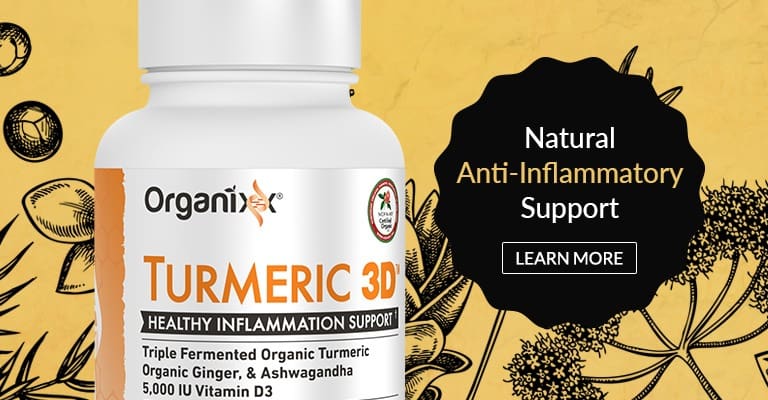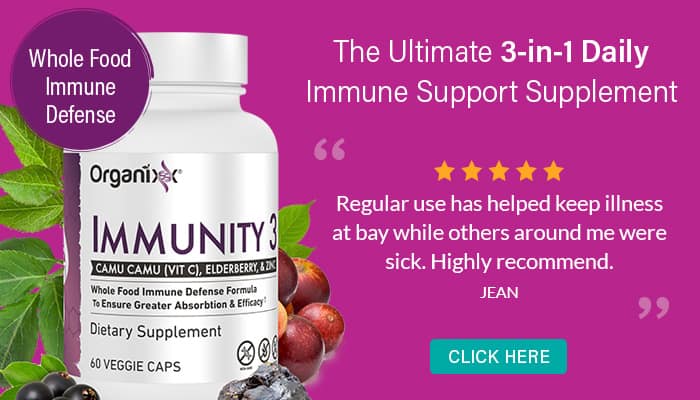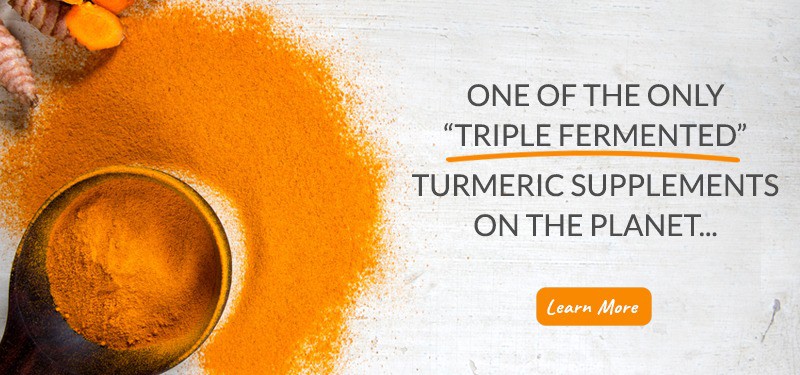Video Transcript:
If you sometimes suffer with sunburns or are looking for a natural way to support your skin and protect it from UVA, UVB, and the assorted UV rays and damage that occurs from being exposed to the sun and being outside in the spring, summer, and fall, today I’m going to share with you some really powerful resources that you probably didn’t even realize are in a capsule.
Turmeric 3D: Internal & Topical Applications for Skin Care
I’m excited, friends, to share with you a way that you can use herbals, both internally and topically, to help support your skin and protect it from sun damage.
There are an assortment of supplements that we have actually put together in our Turmeric 3D, our T3D, that you can use both internally and you can even open up the capsule and use it as a paste on your skin. Let me break down some of the powerful anti-inflammatory and UV-protectant benefits of these items.
Vitamin D: Prevention of Sun Damage and Reduced Skin Cancer Risk
First of all, vitamin D is a powerful resource, and you can use vitamin D both internally and topically to help both prevent sun damage and to reduce UV radiation exposure on the skin.
There’s a lot of clinical research that shows increasing and enhancing and optimizing your vitamin D levels internally can actually lower your risk of skin cancer [1], which by the way, skin cancer is one of the worst cancers and most pervasive cancers that a lot of folks are not screening and routinely assessing within and on top of their skin. It’s important that with all of these recommendations, you make sure you have a regular dermatology appointment annually to assess skin changes and cellular changes and spots that might be suspect.
Vitamin D is powerful for helping support protection of your skin and reducing the damage of the sunrays, changing the cellular makeup, and minimizing the youthfulness of your skin cells.
Curcumin: Anti-Inflammatory, Antioxidant to Minimize UV Damage
The other powerful herbal that I just absolutely love is turmeric, and curcumin is the active ingredient that is anti-inflammatory and an antioxidant that both minimizes UV sun damage. There’s a lot of protectant properties that turmeric provides when you take it internally.
Reduce Effects of Sunburn with Topical Application
But also if you have a sunburn, topical application of turmeric will reduce the inflammation, the swelling, and even the redness of the sunburn and actually help support turnover of your cells so that you get over the sunburn and might even prevent peeling.
Ginger: Increase Skin Elasticity & Reduce Wrinkles
Now, another powerful herbal is ginger, and studies show, ginger particularly at 12 weeks, if you take ginger internally and apply it topically, it will help reduce wrinkling and increase the skin elasticity. [2]
How to Use Turmeric 3D for After-Sun Care & Damage Prevention
Overall, these particular items you’re going to find here in our T3D. I’m going to share with you, we have 5,000 IUs of vitamin D3 in T3D.
You take two capsules in the morning. When you do a paste, you can use one or two capsules, depending on the space or the quantity of skin that we need to address. A lot of times people will be using it on their face, their neck, their chest, their hands, and the arm. Sometimes two to four capsules might be what you want to use for your paste.
And then we also have a combination of turmeric, ashwagandha, and ginger, and that equals about 1,000 milligrams. Turmeric, being a fermented form of turmeric, and we also have a scenario where not only can you intake these for anti-inflammatory and UV protection, but you also can apply it topically.
I always recommend using a combination of either… you use the paste. How you make it, you open up your capsules and either combine it with like a Greek yogurt, or if you want a little oil kind of blend, you can add a little coconut oil and add that into the paste. It’s going to be kind of slightly runny, but not overly runny. You want it to be liquidy, and then you just smear it on. I have one of those painted brushes, like skin face brushes. You can paint that on the area that’s inflamed, red, sunburnt, or UV-damaged.
I’m really excited to share with you this resource because I bet you probably didn’t think the Turmeric 3D is a resource for you, not just internally, but also topically to support your skin. I hope this is helpful. Let me know if you have any specific skin health questions and I’ll be sure to answer them in the Ask the Doctor series.
Turmeric 3D from Organixx provides you one of the most “bioavailable” forms of turmeric due to its unique fermentation process. This means your body experiences the maximum benefits of the purest, most potent turmeric available!
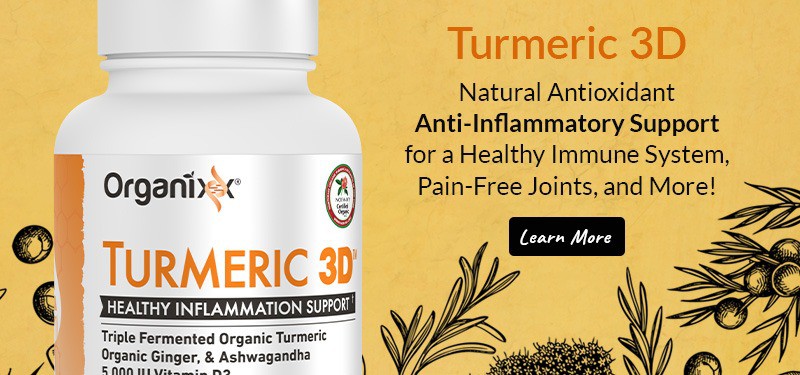
Video Transcript:
One of the most common questions that I get from so many viewers here is, How much zinc is it okay to take? What’s the threshold? Am I taking too much zinc? So these are really common questions about a very popular and critical mineral that we need to be consuming every day, but we also need it in the right balance.
I’m going to share with you the different nuances of taking zinc, what are the forms that I recommend, as well as the dosing to help support your immune system and keep you healthy and well.
Benefits of Zinc and Maximizing its Potency
Let’s talk about zinc. Zinc is something, especially now, we’re dealing with a lot of folks that are concerned about their immune state, want to bolster their immune system to be responsive to colds, and the flu, and even COVID. Zinc is something that a lot of people are taking, but they’re not sure if they’re taking the right form, they’re not sure if they’re taking too much or too little, and they’re not sure if they’re maybe offsetting or creating symptoms because of taking zinc. So I want to cover all of that.
One of the things as a naturopath, zinc is a really critical asset to our immune system. If we utilize it in the right way, we can actually maximize the potency of zinc. I’m going to talk to you a little bit about zinc micro-dosing. That’s how I like to recommend utilizing zinc, and that also ensures that we don’t hit certain thresholds that put us into what I consider “zinc toxicity.”
Different Forms of Zinc: What to Take and What to Avoid
So let’s talk about zinc and the assorted forms. There are a lot of different ways to get zinc into our body. You’re going to find supplementation, like for instance, the Immunity 3 we have here at Organixx. This has two types of zinc. It’s zinc arginate and zinc glycinate, but those are two forms. We also have chelated zinc. We have zinc that we find in trace mineral form and liquid form.
We also will see things like zinc oxide. Often we know that as the zinc we put on our skin, but actually, we can see that in supplementation. I don’t advise that at all, a zinc oxide. So if you are consuming any type of zinc in that category, I would switch to a more bioavailable form. Which leads me to talk about the forms that we want to be consuming.
Transporters Help Maximize Absorption
Zinc is a really unique mineral. It on its own cannot actively and successfully enter into our body and our cells for max absorption. We call max absorption “bioavailability.” So zinc forms that you want to look towards for max bioavailability are going to be zinc that is paired up with what we call a transporter.
We often will see a transporter be an amino acid. That’s the most common. For instance, in the Immunity 3, this is a supplement I love to recommend for folks that want to lift their immune state, that want to grab zinc and get it in the right form, and that also want to be able to micro-dose in a healthy way.
This has camu camu, and it also has elderberry. All very healthy for our immune system. But what’s critical here is the zinc. There’s a zinc arginate and a zinc glycinate, and those two zincs have amino acids that are connected to them. So the amino acid becomes a transporter. It brings in the delivery – and it’s a delivery method – brings in zinc to the cells, and then we see that transportation process happen. Amino acid moves away and voila, we have zinc integrated into our body.
So, Immunity 3 is what I recommend for awesome zinc, but you can get that in also trace mineral form and you can find liquid forms, but most critically, you want to look for a transporter.
Now, if there isn’t a zinc that is bound to an amino acid, sometimes we will see a supplement added into the mix. So for instance, a supplement that has curcumin would be a very helpful zinc transporter.[1] So there are some herbal compounds that can help max the absorption and maximize the bioavailability. So, I just want to clear that up, but zinc plus arginine and zinc plus glycine, those are two very powerful forms that integrate into your body.
Ideal and Maximum Thresholds for Zinc
Now, as far as delivery methods, the transporters are helpful at bringing the zinc into the body. But how do you take a supplement, and what’s the most effective way to look at a zinc?
Well, before I get into that, I want to share with you where we look at the daily, and weekly, and monthly max thresholds for zinc. A lot of this has been studied – it’s in the medical literature – that every day we want to see our daily zinc intake at about 15 mg. That’s the daily required dose. That’s what you’re going to see on a lot of supplement backs. They have the daily value or recommended daily dosage. You’ll see that on supplements.
It’s okay to extend beyond that for a certain period of time, and that’s where we get into micro-dosing. But 100 mg every day for a sequence of days, weeks, and months, we’re at that threshold where we’re getting into zinc at levels that are not going to be equally balanced within the body.
Symptoms of Too Much Zinc
The max threshold is 300 mg of zinc, which is extensive, and honestly, you’d have to be taking a lot of zinc, and it would be overwhelming to your body. You might even get some of the symptoms before you hit that. So usually, we’re going to see that 100 mg threshold where people get symptoms of extensive nausea, they will have changes in their cholesterol levels, it leads to additional stomach upset, headaches, dizziness, even sometimes it’s this weird kind of movement like the spine. They kind of have a wobbly spine.
So there are symptoms that we look for, for that max zinc. But what I recommend is to make sure … This is my cautionary tale … When we are taking more than 15 mg of zinc a day, which is very common … I have a lot of patients when I work with them, we’ll set out all the different products that they’re taking. So they might be taking an elderberry gummy, they might be taking a liquid throat soother, they might be sucking on a lozenge that has zinc. Well, all of those zincs are going to add up. So I like to have us calculate, how much zinc are you getting in your multivitamin? How much zinc is in your protein smoothie powder? Sometimes zinc is going to find its way in food additives. We’re going to see it in some protein bars. We’re going to see it in a lot of different places that we don’t always think about and register.
Plus, we also are going to get zinc from our food, our plant-based sources. So, once we gather that collective quantity of zinc, and you can very easily add this up, what I recommend then is looking at, are you hitting that threshold? If you are, and you’re not taking a zinc balancer, we need to add that in.
What is a Zinc Balancer?
So, let’s talk about the zinc balancer. The direct balance, counterbalance to zinc is copper.[2] This is a lesser talked about and discussed mineral that we need to have in our body to balance out zinc. One of the most common forms of copper deficiency from upper levels of zinc is premature gray hair.
So, if you have graying hair where you’ve noticed you’re on a cold-flu regimen, you’re trying to support your immune system and you’re taking every day 75 mg of zinc, you’ve been doing that for six months and you’ve noticed you’re having a little bit more gray hair. Or even other parts of your body you’re noticing graying hairs. We have gray hairs all over our body. If you’re noticing that, and the only thing that has changed is your immune supportive supplementation, then we need to add a copper to balance that out. So that is really, really important.
I mention that because zinc is not negative. It’s very powerful, and it has positive effects on our bodies. But the way the body, the symbiotic nature and the homeostasis that our body is always trying to achieve, it’s all about balance. If we add more of one thing, we need to counterbalance it with another. That is, I’m hoping, super helpful in understanding how much zinc you want to aim for a day.
How to Micro-Dose Zinc
Let’s talk a little bit about micro-dosing because I want to highlight, for instance, if you are taking the Immunity 3 here at Organixx, you one, calculate the other zincs that you’re taking. So I want to make sure that we’re staying below 50 and 75 mg on a daily basis. If you are just getting your zinc from Immunity 3, awesome. If you notice that you start to feel a kind of ick coming on, then you can start micro-dosing the Immunity 3 because of the zinc. You can micro dose and take two capsules every two to three hours up to three doses that day.
So that is how I recommend ensuring that you are not hitting and going beyond the 100 mg threshold every day. That 100 mg – or close to it –everybody’s body is a little variant in terms of how they react. But that tends to be where we see a lot of those symptoms. We’ll see the nausea, the headaches, the weird kind of wonky imbalance in the lower hip and spine. We also will notice different imbalances when we’re pulling mineral profiles.
When I do blood testing with patients, they’ll have really low copper, super high zinc, and a lot of the symptoms we’re combating, it ends up being because we need to lower the zinc dosage. There are a lot of different ways to do that. I can get into that in future videos. But I just wanted to share with you the most important takeaways of how much zinc, what’s too much, and really how to utilize some of the amazing benefits that we offer you here in Immunity 3 with the two most bioavailable transported forms of zinc.
So let us know how that works. I’m curious for all of you who start calculating your zinc. I’d love to know if you have an average of zinc and the milligram dosage that you’re often finding you’re taking. Love to find out how we can also support balancing zinc here through some other Organixx products. So make sure you comment and let us know.
Organixx Immunity 3 gives you natural immune system support against harmful viruses & bacteria, including the common cold, influenza, and sinusitis. This ultimate 3-in-1 immune support supplement provides 3 powerhouse nutrients in one convenient daily formula: organic camu camu (vitamin C), organic elderberry & 2 forms of zinc.
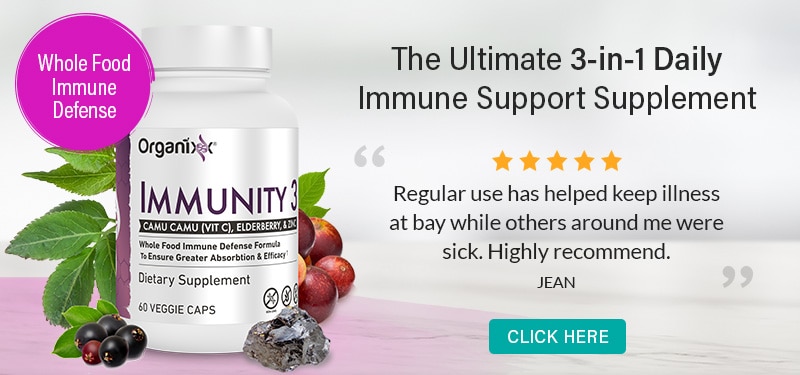
You’ve likely heard about the many health benefits of turmeric (Curcuma longa L.) and its compound curcumin. But did you know that it can be difficult to “unlock” the nutrients in turmeric so your body can actually take full advantage of them?
One popular way to make the compounds in turmeric more bioavailable (i.e., absorbable and usable to the body) is to pair it with another popular cooking spice: black pepper [1]. But what if there was a better way to improve absorption of curcumin than combining turmeric and black pepper? A way to boost turmeric’s bioavailability, allowing it to more safely and effectively support the natural healing process?
The Healing Power of Turmeric
Turmeric is a staple remedy from the traditional medicine systems of the Far East. Out of all herbs and spices, it seems like turmeric has gained the most widespread popularity as a “super” spice in the West in recent years.
Turmeric’s many health-supportive properties are attributed to curcumin, a key component of turmeric that’s been studied extensively for its:
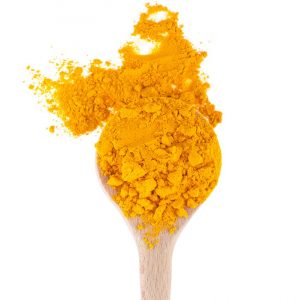 anti-inflammatory properties
anti-inflammatory properties- antioxidant properties
- impact on longevity
Curcumin is documented in the scientific literature as offering powerful support for the cardiovascular, neurological, metabolic, immune, and cellular systems. It’s also the part of turmeric that gives this root spice its rich, golden yellow color.
But the truth of the matter is that humans have a difficult time getting all the health benefits from turmeric when consuming the spice all by itself. Research shows that only a very small portion of its active ingredient (compound) is assimilated into the body when eaten in isolation.
Turmeric and Black Pepper Benefits
This is why many natural health experts suggest consuming turmeric along with black pepper (Piper nigrum). Black pepper contains a unique “bio-enhancer” compound known as piperine that significantly boosts turmeric’s bioavailability – by as much as 2,000 percent, in fact.
This is the reason why many turmeric and curcumin supplement products on the market today contain either black pepper or piperine.
The Problem: Black Pepper Isn’t Good for Everyone
This pairing approach of turmeric with black pepper (or curcumin with black pepper) comes with limitations, however, as too much black pepper can actually be detrimental to health – especially in people with gastrointestinal issues.
 Research published in the American Journal of Gastroenterology found that consuming black pepper in excess can damage the mucosal lining of the gut, potentially causing bleeding or other injuries.
Research published in the American Journal of Gastroenterology found that consuming black pepper in excess can damage the mucosal lining of the gut, potentially causing bleeding or other injuries.
Consuming high amounts of black pepper, this same study found, is akin to taking the painkiller drug aspirin [2]. In other words, aspirin (along with other non-steroidal anti-inflammatory drugs such as ibuprofen) represents a similar threat to the gut lining in terms of its tendency to cause serious erosions and ulcers in the intestinal tract [3].
This isn’t to say that black pepper is inherently dangerous, and there’s no need to toss out the pepper shaker just yet. After all, the amounts of black pepper required to induce such harm are far greater than what the average person consumes in their food on a daily basis.
There’s also evidence to show that taking curcumin along with just piperine, black pepper’s primary alkaloid, is typically safe and causes “no adverse effects [4].”
Even so, there’s always the possibility that someone might react negatively to this combination – especially when taking very high doses of turmeric or curcumin for therapeutic purposes.
For this reason, science set out to determine whether or not it was possible to retain turmeric’s full bioavailability without the need for black pepper, piperine, or any other additive. And the good news is, it is possible.
Fermentation Increases the Bioavailability of Turmeric BETTER Than Black Pepper
As it turns out, by fermenting turmeric its active constituents can be drawn out and made more potent in a way similar to, and potentially even greater than, black pepper.
Here’s another reason why fermented turmeric may be superior to turmeric and black pepper. Besides possibly upsetting a person’s digestive system, black pepper is known to interfere with a process known as glucuronidation that’s necessary for eliminating toxins from the body [5].
Put simply, too much black pepper can cause a buildup of xenoestrogens (harmful chemicals found in plastic and other everyday products) and other toxins that would otherwise be quickly eliminated from the body [6].
With simple fermentation, however, there’s little-to-no risk of these types of complications. That’s because there’s nothing like black pepper getting in the way to block the body’s important detoxification pathways.
It’s rather like eating fresh turmeric, which still contains all of the volatile (essential) oils that help to deliver the herb’s active compounds throughout the body. Fermentation may even go a step beyond this by further optimizing turmeric’s absorption potential.
Research conducted on rat models found that fermented turmeric is, indeed, the best form of turmeric because it contains the most antioxidant power. Compared to ground turmeric in powder and probiotic forms, fermented turmeric led to substantially higher plasma antioxidant concentrations in test subjects [7].
In terms of how it affects the liver, fermented turmeric was shown in a 2013 paper out of South Korea to be powerfully hepatoprotective, meaning it shields the liver from damage.
Not only that, but fermented turmeric was also shown to help improve the liver’s functional detoxification potential [8] – as opposed to black pepper-potentiated turmeric that can inhibit natural detoxification.
Fermented turmeric also contains more curcumin (the beneficial compound) than unfermented turmeric, by volume. In addition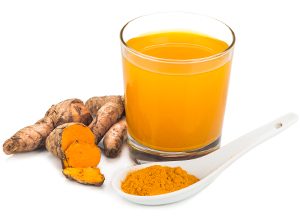 to improving both its antioxidant and antimicrobial capacity, fermenting turmeric draws out an impressive 11% more curcumin compared to what’s found in raw turmeric.
to improving both its antioxidant and antimicrobial capacity, fermenting turmeric draws out an impressive 11% more curcumin compared to what’s found in raw turmeric.
Fermentation also makes turmeric 3.1 times more effective at scavenging oxidizing free radicals from the body [9].
Another area where fermented turmeric has a leg up on both unfermented turmeric and turmeric combined with black pepper is in the area of inflammation.
Research published by The Korean Society for Applied Microbiology and Biotechnology in 2011 found that fermented turmeric is a powerful anti-inflammatory, possessing the ability to inhibit pro-inflammatory cytokines much more effectively than any other known form of turmeric. Fermented turmeric was further shown in this same study to protect against acute anaphylactic, or allergic, reactions [10].
From an antimicrobial perspective, fermented turmeric shows incredible potential against a wide variety of pathogenic bacteria, including drug-resistant “superbugs.”
Research out of the Middle East in 2016 found that fermented turmeric provides broad-spectrum protection against harmful bacteria such as Escherichia coli (E. coli), Streptococcus agalactiae, Staphylococcus aureus (Staph), Entreococcus faecalis, Methicillin-Resistant Staphylococcus aureus (MRSA), Klebsiella pneumonia, and Pseudomonas aeruginosae [11].
Earlier research out of China found that fermented curcumin can be a powerful weapon against high cholesterol, also known as hyperlipidemia. While unfermented curcumin showed minimal-to-no benefits during the evaluation, its fermented counterpart significantly reduced serum lipid levels in animal test models [12].
Fermented Turmeric Increased Fat Loss in Animal Test Subjects
 Fermented turmeric also shows promise in fighting another undesirable form of fat: the obesity kind.
Fermented turmeric also shows promise in fighting another undesirable form of fat: the obesity kind.
Research out of South Korea in 2015 found that consumption of fermented turmeric can alter the expression of certain genes involved with lipid accumulation, effectively preventing them from communicating to the body that it’s time to pack on extra pounds [13].
Related research published a year later, also out of South Korea, reiterated these findings while building upon them. Obese rats fed a high-fat diet not only didn’t gain more weight when also consuming fermented turmeric, but they further lost weight as a result of consuming the herb as part of their daily eating routines [14].
Preventing Impairment of Learning and Memory
Research has shown that fermented turmeric can also play a role in brain health. Among the findings fleshed out in a 2017 paper published in the journal BMC Complementary and Alternative Medicine was evidence suggesting that fermented turmeric has the potential to mitigate memory impairment while supporting optimized learning and memory ability in mice [15].
While more research needs to be done, the evidence so far seems clear… fermentation is the key to “unlocking” the incredible healing potential of turmeric, while avoiding the potential side effects of combining turmeric and black pepper.


